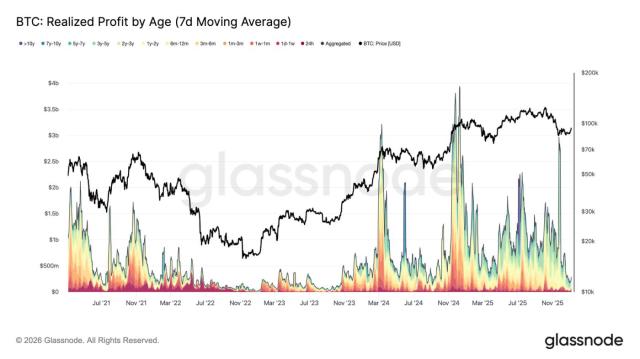Original author: Possibility Result
Original translation: TechFlow
Introduction
As ETH staking yields fall to around 3%, investors have turned to tokenized restaking pools called Liquid Restaking Tokens (LRTs) to boost ETH-denominated yields. As a result, the value in LRTs has surged to $10 billion . The main driver of this trend is that ~ $2.3 billion has been used as collateral for leverage. However, this strategy is not without risk. Each component of LRTs has its own unique risks that are difficult to model, and there is insufficient liquidity on the chain to support efficient liquidations in large-scale slashing events.
As Ethereum (ETH) staking yields fall to around 3%, investors are turning to tokenized pools called Liquid Restaking Tokens (LRTs) in search of higher yields on Ethereum. As a result, the value in LRTs has surged to $100 billion. This trend is primarily driven by around $23 billion in collateral, used for leverage. However, this comes with risks. Individual positions in LRTs have idiosyncratic risks that are difficult to predict, and insufficient on-chain liquidity makes it difficult to effectively liquidate in large-scale slashing events.
The current situation with LRTs has some similarities to the situation before the 2008 financial crisis. In 2003, the federal funds rate fell to a 50-year low of 1%. In pursuit of higher returns on dollars, investors poured into the U.S. real estate market. As individual mortgages lacked liquidity, financial engineers packaged them into mortgage-backed securities (MBSs). The core problems of the 2008 crash were excessive leverage and illiquidity in MBSs, which, like LRTs, contained idiosyncratic risks that were difficult to predict. When bad mortgage lending practices led to an increase in defaults, the chain reaction of liquidations, panic, and liquidity shortages triggered a severe global recession.
Given these similarities, we should reflect and try to answer: What can we learn from the lessons of the past?
A brief history in 2008
(Note: There is a lot more that is not mentioned here, but to keep on topic I have picked out the ones that are most relevant to our story).
A simplified story leading up to the 2008 recession is as follows:
Incentives for loan originators and securitizers
The increased demand for mortgage-backed securities (MBSs) naturally incentivized an increase in the supply of mortgages. As a result, the “origin and distribute” model grew in popularity. This allowed mortgage lenders (originators) to quickly transfer default risk to securitizers, who in turn transferred it to traders seeking higher yields (distributions). By transferring risk, the process of originating loans became more scalable because they could quickly originate and sell mortgage debt without the need for a large balance sheet and effective risk management.
Here lies our first principal-agent problem: since mortgage originators bear no risk on the loans they make, they have the means and incentive to make more mortgages with little risk. This incentive structure results in the emergence of an extremely bad type of mortgage known as a “designed to default” loan.
Rating agency incentives
However, in addition to mortgage originators and securitizers, there were rating agencies supporting these seemingly stable sources of income. The involvement of rating agencies also played an important role. Depending on the structure of each specific mortgage-backed security (MBS), rating agencies were responsible for assessing which securities were high-quality (AAA) and which were high-risk (B and below). The involvement of rating agencies accelerated the arrival of the financial crisis in two ways:
Rating agencies are paid by the institutions responsible for packaging and securitizing mortgages. This conflict of interest led to a race to the bottom among rating agencies in order to win more business. For example, Fitch, a rating agency, lost almost all of its MBS rating business because it gave fewer AAA ratings.
The risk models at the time were flawed , in particular they incorrectly assumed that the default risk between different mortgages was independent. As a result, securitizers could tier MBSs by risk (the riskiest tranches would suffer X% loss first in the event of a default) to create collateralized debt obligations (CDOs). The riskiest tranches were more likely to receive a AAA rating, while the riskiest tranches could be repackaged, retiered, and rated again. The top tranches of these new CDOs would often be re-rated AAA (it’s important to note that the default probabilities are not independent).
Excessive use of leverage
In 1988, the Basel I Capital Accord was approved, which stipulates the capital requirements for internationally active banks. The so-called capital requirement refers to how much capital a bank must reserve for each dollar of "risk-weighted" assets it holds. In simple terms, this actually limits the maximum leverage ratio of banks to 12.5:1. If you are familiar with cryptocurrency lending protocols, you can think of risk-weighted capital requirements as similar to the loan-to-value ratio of different assets. But in fact, "risk weighting" is not always for reducing risk, it is sometimes used as a tool to encourage banks to pursue other goals.
To encourage banks to finance residential mortgages, residential mortgage-related securities were set at half the risk of commercial loans (50%), meaning banks could use twice as much leverage (25:1). In 2007, Basel II further reduced the risk weights of AAA-rated mortgage-backed securities (MBS), allowing banks to increase their leverage ratio to 62.5:1 (note: lower-rated MBS had lower leverage ratios) (GAO report on mortgage-related assets).
Despite capital requirements, banks circumvented additional leverage restrictions by achieving “rating and regulatory arbitrage” through special investment vehicles (SIVs). An SIV is a separate legal entity “sponsored” by a bank, but with a separate balance sheet. Although the SIVs themselves have little credit history, they can borrow at low rates to purchase assets because the “sponsoring” bank is widely believed to provide support in the event of losses. In effect, the bank and these off-balance sheet SIVs are almost one and the same.
For a long time, banks did not have to meet any capital requirements for the debt of SIVs. It was not until Enron collapsed by hiding debt in carefully designed off-balance sheet vehicles to prop up stock prices that regulators began to revisit the issue. However, despite this, there was no substantive change in regulation - SIVs were still subject to only 10% of the capital requirements of their sponsoring banks. Expressed in terms of leverage ratios, banks could still use 625:1 leverage on AAA-rated mortgage-backed securities (MBS) through SIVs. (Note: this does not mean that banks must maximize leverage or only hold MBS, just that they can do so).
As a result, SIVs soon became the most important channel for funding mortgages in the global financial system (Tooze 60).
The opacity of complexity
There are important lessons to be learned about complexity. Finance is not simple; at its core, some players are better at assessing and taking risks than others. It’s relatively easy to assess a government bond in isolation. A mortgage is more complex, but still within reason. But what about a pool of mortgages based on complex assumptions? Or risk stratification based on even more assumptions? Or a pool of mortgages that has been repackaged and stratified many times? It’s confusing.
In these complex packaging and layering processes, many people choose to leave the risk assessment to "the market" instead of conducting detailed due diligence on these derivatives.
There is a strong motivation behind the derivatives market’s pursuit of complexity, which tends to favor savvy investors and disadvantage the inexperienced. When financial engineer and Goldman Sachs employee Fabrice “fabulous Fab” Tourre was asked who would buy their synthetic CDOs, his answer was: “Belgian widows and orphans” (Blinder 78).

But the “Wall Street is greedy!” narrative is an oversimplification. In fact, the losses on AAA-rated bonds issued from 2004 to 2007 (the height of the market frenzy) were not severe—the cumulative loss through 2011 was just 17 basis points—yet global markets experienced an unprecedented collapse. This suggests that excessive leverage and bad collateral may not have been the only cause.
In Credit Crises , Gorten and Ordonez argue that even routine market fluctuations can trigger recessions when there is a cost to disclose information about the quality of collateral. The model shows that as markets go longer without major shocks, lenders reduce the information costs they spend on rating. As a result, borrowers with low-quality collateral that is expensive to rate (e.g., subprime mortgage-backed securities held in SIVs) gradually enter the market. As ratings fall, borrowing costs fall, which in turn increases market activity because borrowers can obtain collateral at a lower cost. However, when the value of some risky collateral declines slightly, creditors may choose to pay the rating costs to reassess it. As a result, lenders begin to avoid collateral that is expensive to rate, even if it is not of poor quality. This credit crunch can lead to a significant decline in market activity (Gorton and Ordonez).
Similarities between MBS (Mortgage Backed Securities) and LRT (Liquidity Return Tool)
The demand for secure ETH yields in the crypto market (especially Ethereum) is similar to the pursuit of secure USD yields in traditional finance. Similar to the USD yields on government bonds in 2003, the yields from ETH staking are also gradually compressing. With about 30% of the ETH supply staked, the current yield has dropped to about 3%.
Similar to mortgage-backed securities (MBS) in 2008, the decline in staking yields has prompted the market to look for riskier investment opportunities for greater returns. This analogy is not new. In particular, in the article " What PoS and DeFi can learn from mortgage-backed securities " by Alex Evans and Tarun Chitra, they compared Liquid Staking Tokens (LSTs) to MBS. The article discussed how LSTs can help stakers obtain both staking returns that ensure network security and DeFi returns, avoiding competition between the two. Since then, LST holders have mainly increased leverage by borrowing it as collateral.
However, the relationship between MBS (mortgage-backed securities) and liquid rehypothecation tokens (LRTs) appears to be more complicated.
While LSTs like stETH bring together validators with relatively homogeneous risk (because they validate relatively stable protocols), the re-staking market is completely different. Re-staking protocols facilitate the simultaneous aggregation of staking on various active validation services (AVS). To incentivize users to deposit, these AVS pay fees to stakers and operators. Compared to normal ETH staking, the number of opportunities for ETH re-staking is unlimited - but as a result, there may also be unique risks (e.g., unique slashing conditions).
Risk-seeking crypto markets have flocked to deposits due to higher yields, with the total value locked (TVL) at around $14 billion as of writing. A significant portion of this growth (around $10 billion ) is accounted for by Liquid Restaking Tokens (LRTs), which tokenize shares in the restaking position pool.
On the one hand, normal ETH staking rewards feel like “government-issued and backed.” For example, most stakers probably assume that Ethereum will hard fork in the event of a major consensus error that results in a massive penalty.
On the other hand, restaking returns can come from any source. They cannot rely on issuing ETH in the protocol to incentivize continued security. Ethereum hard forks will become more controversial if implementation flaws of custom slashing conditions emerge. If the situation is dire enough, perhaps we can see if the hard fork from the DAO hack leads to any moral hazard associated with the bailout of banks that were deemed “too big to fail” and would otherwise pose a systemic risk to the global financial system.
The incentives of LRT issuers and ETH re-stakers are similar to those of mortgage securitizers and banks seeking higher yields. As a result, we may see that loans designed to default in the crypto space are not only possible, but may become common. A specific type of loan that defaults is called a NINJA loan because the borrower has no income, no job, and no assets. In re-staking, this phenomenon manifests as low-quality active validation services (AVS) acquiring large amounts of LRT collateral in order to obtain short-term returns provided through token inflation. As we will discuss in subsequent sections, there are some important risks if this happens at scale.
Actual risks
The most significant financial risk is a slashing event that causes the value of LRT to fall below the liquidation threshold of various credit protocols. Such an event will result in the liquidation of LRT and may have a significant impact on the price of related assets, as assets in LRT will be unlocked and sold for more stable assets. If the initial liquidation event is large enough, it may trigger a chain reaction liquidation of other assets.
I can think of two possible scenarios where this might actually happen:
Bugs in newly implemented slashing conditions. New protocols will have new slashing conditions, which means new bugs that affect a large number of operators could emerge. The likelihood of this outcome is high if “designed to default” active validation services (AVS) become very common. That said, the size of the slashing event is also very important. Currently, AAVE (which has $2.2 billion in LRT collateral at the time of writing) has a 95% liquidation threshold for borrowing ETH to collateralize weETH (the most popular LRT) - meaning that an exploit would need to cause more than 5% of the collateral to be affected by a slashing event to trigger the first wave of liquidations.
Social Engineering Attacks. An attacker (either a protocol or an operator) can convince various LRTs to invest capital with them. They would then build a large short position against the LRT (and possibly ETH and other derivatives). Since the capital does not belong to them, they do not have much at risk, except for their reputation. If the builder or operator does not care about their social reputation (perhaps because they are pseudonymous), and the payout from the short position and attack bonus is significant enough, they should be able to make a pretty decent profit.
Of course, all of this is only possible if slashing is enabled — which is not always the case. However, before slashing is enabled, the benefit of restaking to the economic security of the protocol is minimal, so we should be prepared for slashing risk.
Avoid past mistakes
So the big question remains…what can we learn from the past?
Incentives are important
Currently, the competition between liquidity re-staking tokens is focused on offering the highest yield in ETH. Similar to the increased demand for risky collateralized lending, we will see demand for risky active validation services (AVS) - which is where I believe most of the penalty (and liquidation) risk lies. Risky assets alone are not too worrisome, but they become a problem when they are used to take on excessive leverage without sufficient liquidity.
To limit excessive leverage, lending protocols set a supply cap, which determines how much of a particular asset the protocol can accept as collateral. The supply cap depends largely on the available liquidity. If there is little liquidity, it will be more difficult for liquidators to convert the liquidated collateral into stablecoins.
Similar to banks taking on excessive leverage in order to increase the notional value of their portfolios, lending protocols may have significant incentives to violate best practices in favor of more leverage. While we hope that the market will be able to avoid this entirely, history, such as events like 2008, tells us that when people are faced with the promise of profits and the cost of information disclosure is high, they tend to delegate due diligence to others (or ignore it altogether).
Learning from past mistakes (e.g., the incentives of rating agencies) tells us that it would be very helpful to build an unbiased third party to help assess and reconcile the risks of different collateral types and lending protocols - especially liquidity rehypothecation (LRT) and the protocols it secures. And use their risk assessments to make safe, industry-wide recommendations for liquidation thresholds and supply caps. The extent to which protocols deviate from these recommendations should be made public so that they can be monitored. Ideally, this organization should not be funded by those who might benefit from high-risk parameters, but by those who want to make informed decisions. Perhaps this could be a crowdsourced initiative, an Ethereum Foundation grant, or a for-profit "come for the tools, stay for the network" project that serves individual lenders and borrowers.
L2Beat has done a good job managing similar initiatives for Layer 2, with support from a grant from the Ethereum Foundation. So I have some hope that something similar can succeed in restaking - for example, Gauntlet (funded by the Eigenlayer Foundation) seems to have started, although there is no information about leverage yet. However, even if such a project is established, it is unlikely to completely eliminate risk, but at least it can reduce the cost of obtaining information for market participants.
This also leads to a second related point.
Inadequate models and liquidity shortages
We discussed earlier how the rating agencies and mortgage securitization companies had grossly overestimated the independence of mortgage defaults. The lesson we learned from this is that a fall in house prices in one part of the United States can have a huge impact on house prices elsewhere, not only elsewhere in the United States, but also around the world.
Why?
Because a small number of large players provide most of the liquidity for global economic activity, and these players also hold mortgage-backed securities (MBS). When bad mortgage practices cause MBS prices to fall, the ability of these large players to provide liquidity to the market is reduced. As assets need to be sold in the less liquid market to repay loans, prices everywhere (whether mortgage-related or not) fall as well.
Similar overestimations of “shared” liquidity can inadvertently arise in lending protocol parameter settings. Supply caps are set to ensure that collateral in a protocol can be liquidated without causing bankruptcy. However, liquidity is a shared resource that every credit protocol relies on to ensure solvency in the event of liquidation. If one protocol sets its supply cap based on liquidity at a certain moment, several other protocols can make their own supply cap decisions on a case-by-case basis, rendering each prior assumption about available liquidity inaccurate. Therefore, lending protocols should avoid making decisions independently (unless they do not have priority access to liquidity).
Unfortunately, it is difficult for protocols to set parameters securely if liquidity is permissionless and accessible to anyone at any time. However, this uncertainty can be resolved by being able to give liquidity priority access in certain situations. For example, a spot market for an asset used as collateral could set a hook that queries the lending protocol to check if liquidation can occur whenever a swap is made. If a liquidation is in progress, the market can only allow asset sales to be triggered by a message call from the lending protocol itself. This feature could allow lending protocols to set supply caps with greater confidence by working with exchanges.
Case Study:
We may already have a case study to observe the development of the LRT market.
There is over $2.2 billion in weETH collateral provided on the AAVE chain, but according to the Gauntlet dashboard , the on-chain liquidity of the exit path to wstETH, wETH, or rETH is only $37 million (this doesn’t even take into account slippage or USDC exits, making actual liquidity even worse).
As other lending protocols begin to accept weETH collateral (for example, Spark currently has over $150 million in total weETH locked), competition for small amounts of liquidity will intensify.
The liquidation threshold for ETH borrowing collateralized by weETH is 95% , which means that a liquidation event worth more than 5% of the LRT collateral should be enough to trigger the first wave of liquidations. As a result, hundreds of millions to billions of dollars of selling pressure will flood the market. This will almost certainly lead to a surge in selling pressure on wstETH and ETH as liquidators convert assets to USDC, risking subsequent waves of liquidations for ETH and related assets. But as mentioned earlier, as long as liquidations do not occur, the risk is small. Therefore, deposits in AAVE and other credit protocols should be safe for now and not at risk of liquidation.
Key Differences
It would be inappropriate to write an entire article about the similarities between LRTs and MBSs (and cryptocurrencies today vs. the pre-2008 financial system) without discussing some key differences. While this article conveys some similarities between MBSs and LRTs, they clearly have differences.
One of the most important distinctions is the open, overcollateralized, algorithmically driven, and transparent nature of on-chain leverage versus bank and shadow banking leverage. The capital inefficiency of overcollateralization brings some important advantages. For example, lenders should always expect to get their money back if the borrower defaults (and there is sufficient liquidity) - this is not the case with undercollateralized loans. Their open and algorithmically driven nature also enables assets to be liquidated instantly and allows anyone to participate in liquidations. As a result, untrustworthy custodians and shady counterparties cannot take harmful actions such as delaying liquidations, executing liquidations at a price below their value, and rehypothecating collateral without consent.
Transparency is an important advantage. On-chain information about protocol balances and collateral quality is available for anyone to verify. In the context of the previously discussed work by Gorten and Ordonez, we can say that DeFi operates in an environment where the cost of assessing collateral quality is low. Therefore, the cost of revealing information about collateral quality should be lower, allowing the market to adjust at a lower cost and more frequently. In practice, this means that lending protocols and users have a richer source of information to make decisions on key parameter choices. However, it is worth noting that for re-staking, there are still some subjective off-chain factors, such as code quality and team background, and the cost of obtaining this information is higher.
One anecdotal indication is that on-chain lending activity appears to have increased since the collapse of BlockFi, Celsius, and others. Notably, we have seen significant growth in deposits for AAVE and Morpho, but little off-chain lending activity on a comparable scale to previous cycles. However, obtaining concrete data on the current size of the off-chain lending market is not easy - meaning there may be significant but under-publicized growth. Barring a direct lending protocol hack, ceteris paribus, on-chain leverage implementations should be more resilient for the reasons outlined above.
As the risk of LRT being slashed increases, we may once again have a great opportunity to see the pros and cons of transparent, overcollateralized, open, and algorithm-driven lending in action. In the end, perhaps the biggest difference is that we don’t have a government to bail us out if something goes wrong. There is no government backing or Keynesian token economics for lenders. There is only code, its state, and changes to that state. Therefore, we should try to avoid unnecessary mistakes.








